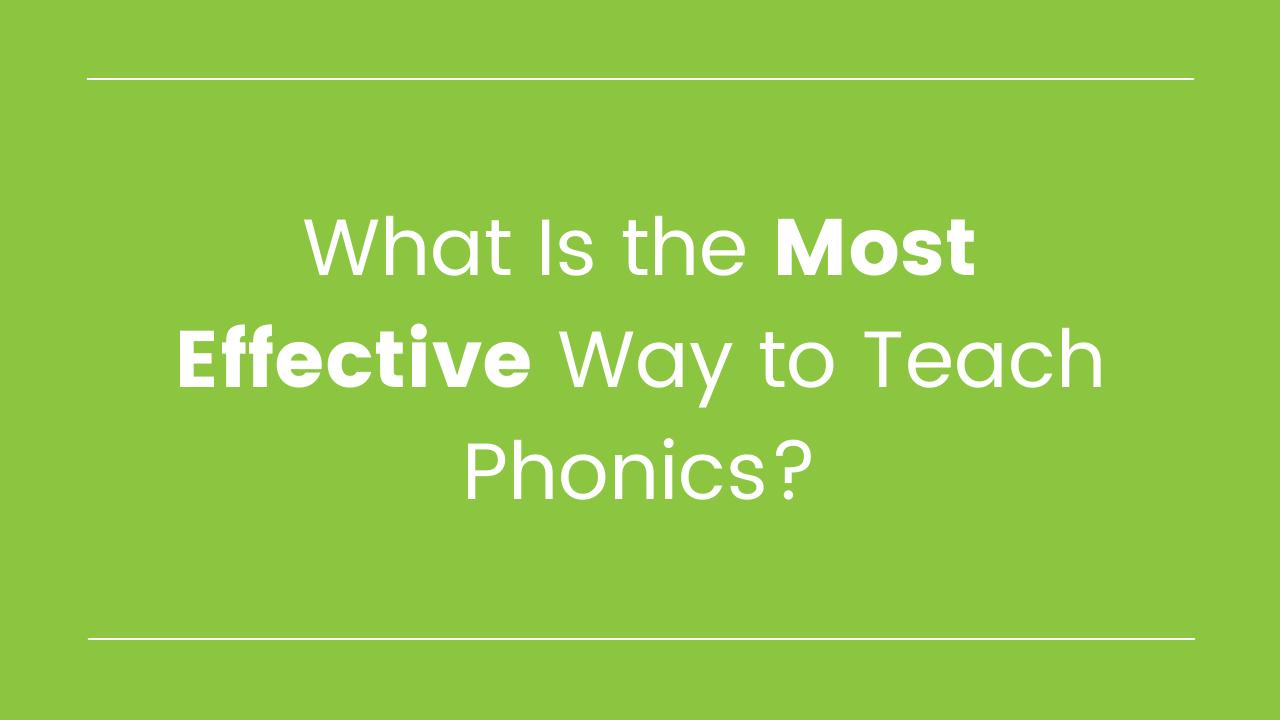
What Is The Most Effective Way to Teach Phonics?
Looking for the most effective way to teach phonics? While there isn't research that identifies specifically what activities should be included in every phonics lesson, there IS research to tell us what overall approach we should use to teach phonics.
This is good news, because it means that as long as we follow the research-backed overall approach, we have a little flexibility in some of the day-to-day activities we use with our students!
Let's dive into the overall instructional approach - and then talk about what that might look like on a daily basis!
Systematic, explicit phonics instruction
Research tells us that students have the best phonics and reading outcomes when they are given systematic, explicit phonics instruction.
Let's break down the terms "systematic" and "explicit:"
In systematic phonics instruction, students are taught individual phonics skills (like the letter "Ss" or silent e or the diphthong "au") in a set sequence. In a differentiated classroom, students may be working on different phonics skills, but they are all progressing along the same sequence of skills.
Systematic phonics instruction is not haphazard or "spur of the moment." Teachers do not select a skill because they think it would be good to work on next, or because it is relevant to a book that they're using with students. Skills for instruction are selected based upon that set sequence.
In explicit phonics instruction, students learn about letters and letter combinations - and the sounds they represent. If the teacher is covering - for example - the r-controlled vowel "or," she explains how the r changes the sound of the o. Students learn the sound for the "or" pair, and they use that knowledge to read and write words with "or."
Explicit phonics instruction does not require students to make these connections on their own from words they encounter (because many students simply will not make these connections on their own).
What is an example of systematic, explicit phonics instruction in Kindergarten?
Here is an example of systematic, explicit phonics instruction in Kindergarten:
- It's the third month of the school year. The class has covered many alphabet letters already. Next up the sequence are the letters Dd and Hh.
- On Monday, the Kindergarten teacher begins working on the letter Dd.
- The class begins with a phonological awareness warm-up (working with the sounds in words).
- Next, they go through some flashcards - to practice letter names, letter sounds, and high frequency words.
- The teacher introduces the letter Dd, saying: “Today we’re going to practice the letter D. Can you point to the letter D on our alphabet chart?" She waits for students to locate the letter, then says: "This is the capital D. Say ‘capital D.’” (Capital D) “This is the lowercase d. Say ‘lowercase d.’” (Lowercase d)
- Students brainstorm words they already know that begin with the letter Dd.
- The teacher reads aloud a short rhyme that contains many words that begin with Dd.
- Students learn the way that the letter Dd is formed, and they practice tracing the letter Dd.
- Students sort picture cards, some of which begin with the /d/ sound and some of which do not.
- Students finish the lesson by learning a new high frequency word ("the").
What is an example of systematic, explicit phonics instruction in first or second grade?
Here's an example of systematic, explicit phonics instruction that might take place in a first or second grade classroom:
- The class has learned about long vowel sounds already. They know how to read and spell long vowel words that have a silent e. Next up in the sequence is the vowel team "ay" that represents the long a sound.
- The teacher begins the lesson by having students review high frequency words and some previously taught sounds on flashcards.
- Next, students practice blending sounds and segmenting words into syllables (phonological awareness).
- The teacher display the "ay" vowel team on a poster that also has a picture of hay and the word "hay." She says: “Today we’re going to learn about two letters who are very good friends. You know these letters already, a and y. When a and y play together, a likes to go first. So we only hear the long a sound, ā. We don’t hear any sound for y. A-Y says ā. Say that with me.” (A-Y says ā)
- The students brainstorm words that contain the "ay" vowel team.
- Students trace the "ay" vowel team in sand while saying aloud "A-Y says /ā/." The students also trace a few other sound patterns they've already learned (as review).
- Students practice reading words with the "ay" vowel team.
- Students use magnetic letters to practice building words with the "ay" vowel team.
In both of these example lessons, there's a lot going on! But as you probably noticed, the phonics patterns were selected because they were up next in a sequence. And the teacher clearly explained how these letter/letter combinations work to produce a specific sound.
Both of these example lessons come from our phonics program, From Sounds to Spelling. To access example weeks of Kindergarten, first grade, and second grade materials from the program, visit this link. The program makes it easy and fun for teachers to implement systematic, explicit phonics instruction - and the results show in students' reading abilities!




